New Teleconference Time
To better support new participants we have rescheduled our weekly teleconference to Wednesdays at 2:30 PM Boston time.
If this time suits your schedule better, we look forward to having you join the discussion.
Note: Community Groups are proposed and run by the community. Although W3C hosts these conversations, the groups do not necessarily represent the views of the W3C Membership or staff.
| name |
|---|
| Overlay Applications in Web Accessibility |
| Overlay Capabilities Inventory |
Chairs, when logged in, may publish draft and final reports. Please see report requirements.
To better support new participants we have rescheduled our weekly teleconference to Wednesdays at 2:30 PM Boston time.
If this time suits your schedule better, we look forward to having you join the discussion.
Our community group will once again participate in W3C’s annual week-long technical gathering, better known as TPAC. We will host an introduction to our working document, “Capabilities Inventory,” discuss future directions for the document and how it can serve for useful guidance in the industry.
The document is already receiving attention and discussion online, such as in the web-a11y.slack.com community. It is also scheduled for discussion on the Accessibility Platform Architectures Working Group agenda, with the goal of better informing W3C’s specifications and guidance.
That’s why broad conversation in our breakout will give us a more realistic exposition of the problems and opportunities. Meeting details:
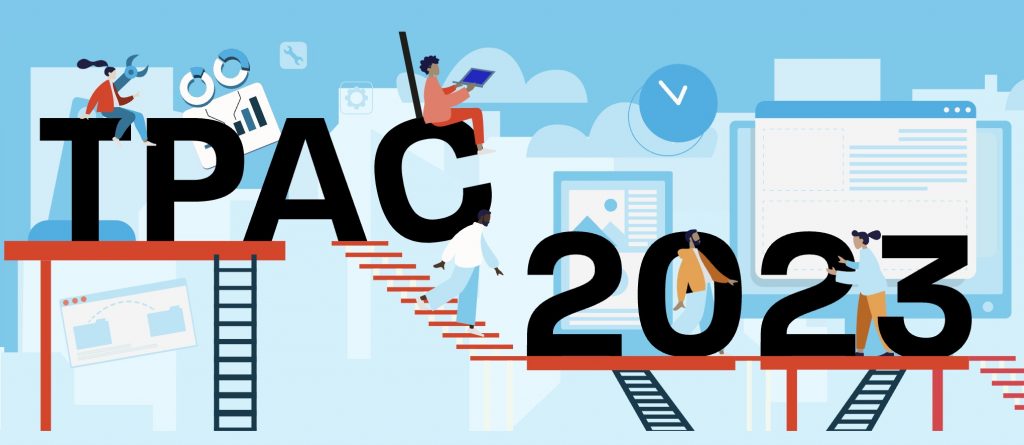
https://www.w3.org/calendar/tpac2023/breakout-sessions/
13 September 2023, 09:30–10:30 Central European Summer Time
Participation is free, and does not require attending any other TPAC meetings.
Link to the Capabilities Draft Report
Looking forward to an insightful session. See you there!
Opening Toward Constructive Face to Face Engagement
Oversimplified discussions about overlays has been an unfortunate tendency in recent years. Painting them as a one-size-fits-all solution that doesn’t acknowledge disparate individual accessibility needs has tended to subvert constructive discussion impeding progress to real benefits for real users.
The just concluded NFB convention in Houston gave us the opportunity to challenge this narrative with facts and nuanced descriptions of user requirements in direct, face to face communication with one critical community of web users who’ve been justifiably frustrated by far too much negative experience of overlays over these same recent years.

Lionel Wolberger from our Community Group brought braille copies of our complete current Capabilities draft, along with a brailled executive summary, to the NFB. At a booth in the exhibit area and in two scheduled listening sessions he unveiled our early draft of Capabilities to a select group of blind leaders and technology professionals, along with a convention hall of ordinary users who, up to this point, were admittedly skeptical of the concept of overlays proved to be a highlight of the convention week.
We were able to introduce attendees to the intricate nuances of overlays, and particularly how our Community Group focuses on enhancing “accessibility at the edge” in support of multiple accessibility scenarios and not just screen reader users. We had the opportunity to share our vision of providing
solutions as close to the user as possible, maximizing customization opportunities, and minimizing friction for the individual user. We were able to demonstrate our goal of W3C-level precision regarding what functions exactly we are talking about and how these can be harnessed to provide ever more accessible user support regardless the device a user is using at any moment.
We extend our gratitude to the NFB and all the convention participants for their respectful engagement and valuable feedback. We were able to agree that open dialogue, constructive criticism, and collaborative problem-solving, can indeed allow us to work together towards a digital landscape that truly includes everyone so completely that no user will really care how it’s accomplished.
We are also grateful for the W3C Community Group process for providing a safe setting for developing this work. For more updates on Accessibility at the Edge, the Overlay Capabilities report and our other initiatives, stay tuned. We are just getting started.
More people are bringing more diverse viewpoints into our Monday Teleconference conversations, all of which are being reflected in our document, Overlay Capabilities.
We believe that one of our two major sections, Meeting User’s Needs, is near completion. We feel we gathered all the relevant facts and are now editing that section primarily for clarity. Meanwhile, we’re focusing on the other major section of this report, Meeting Content Provider’s Needs. In this age of mashup content it’s very important to understand the impact on accessibility of content gathered by from multiple sources and assembled, perhaps by the Content Delivery Network (CDN), for delivery to the end user. All the facts for this section aren’t quite yet in the document, but getting them properly described is our current focus.
We continue to develop diagrams to express the mutual relationship of the website source and the various edge technologies that create today’s typical end-user’s experience. The architecture is meant to embrace accessibility overlays as well as edge technologies in the planning stages, such as a reporting URL for reporting accessibility failures. The draft diagram below shows the cloud, user and edge labelled according to vocabulary we are curating together in the community group. A cloud at top is labeled “Content Provider”, a rectangle at bottom is labeled “User”, and a cloud on the left, roughly between the two, labeled “Edge Service Provider”. An arrow points from the Content Provider to the User which merges with an arrow pointing from the Edge Service Provider, to the User, whose device integrates and renders the result.
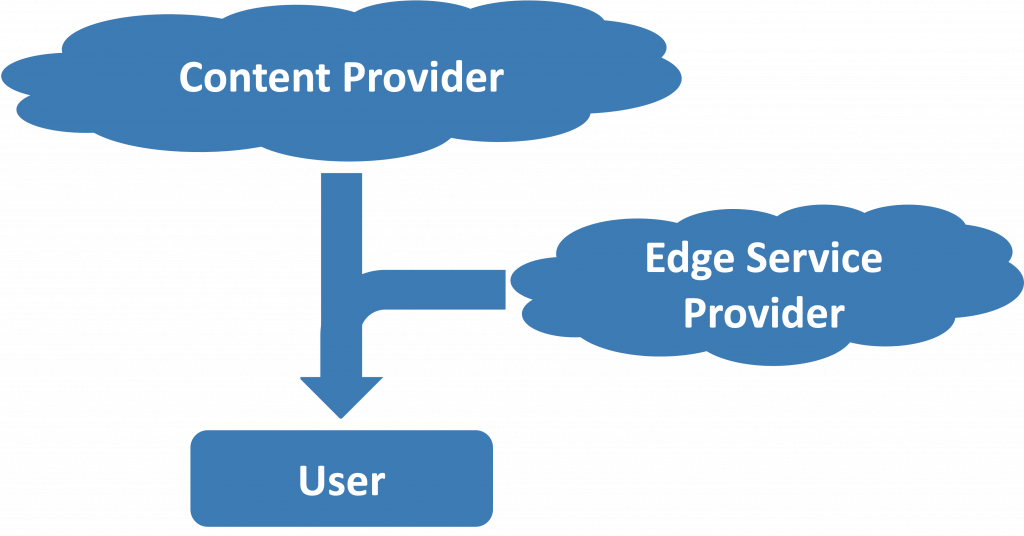
Please know, it’s not too late to join the discussion! Mondays at 1 PM Boston time. You can see the calendar here, and click to join the community group.
As always, your comments and contributions will help us get all relevant facts captured and properly presented!
We’re pleased to announce a major update of our draft report on Overlay Capabilities.
Where previously these were simply a list of over 46 and prospective applications of overlays in support of accessibility, they’re now organized under two primary categories with several subcategories under each primary section. The primary categories are:
As before we continue to add capabilities based on your feedback and discussion during our weekly teleconference meetings. And, as before we continue editing our analysis of each overlay capability from three viewpoints:
Our last teleconference discussed adding graphical content to our documents. Here’s an image we found that illustrates how we think of the edge quite well. It illustrates Samsung’s Dictionary entry on Edge Computing, below:

We expect to do similar graphics moving forward.
We are working our way through forty-six explicit capabilities that are often facilitated by overlays. This is not a fixed number, it could be expanded or contracted as people contribute more.
We’re examining these overlay facts from three essential viewpoints. These viewpoints include the upstream source. They also include several edge technologies such as Javascript embedded in the page, content delivery networks, and user-agent-based technologies.
Track our progress in the overlay GitHub, capabilities.html–look at the latest branch, as we may not have merged yet–and feel free to file GitHub issues.
Next meeting is this Monday 6 March 2023 at 1 PM Boston.
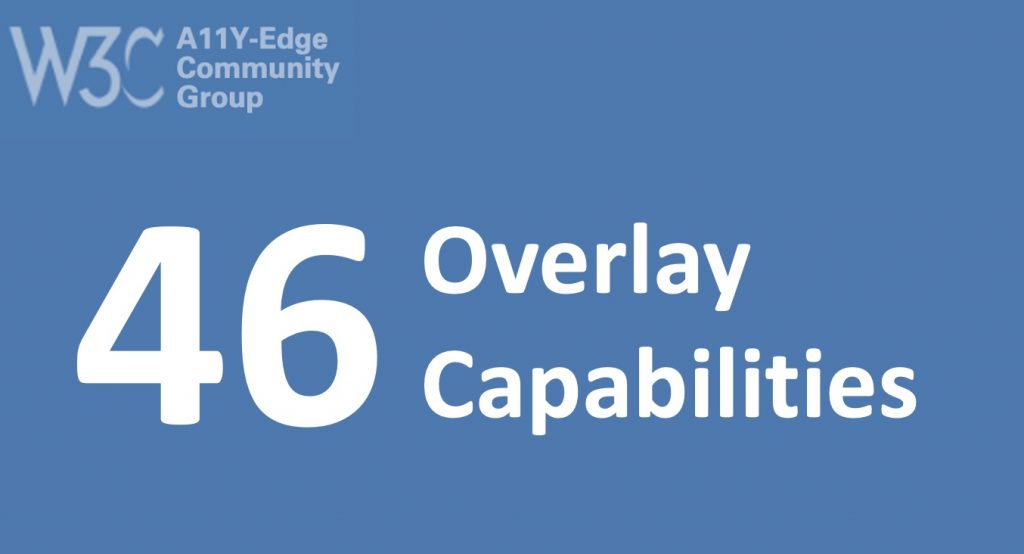
We are now meeting regularly on Mondays. See the calendar and join us!
We are working through a dispassionate and technical evaluation of overlay facts, capturing a list of things that overlays do (or claim to do). Examples include:
You can follow our progress here (Google Sheets).
How we are working on it:
Feel free to supply your own list of what overlays do, or claim to do, especially if you have additional functions that are not on our current list. You can submit a document to me (email to janina.sajka at gmail) or this community list, public-a11yedge@w3.org and come join our discussions.

– Janina Sajka, Chair
Please find below the agenda for our upcoming weekly teleconference for the Accessibility at the Edge Community Group. We are keeping the agenda of the last meeting, which is:
Zoom coordinates, meeting ID: 84665535534
Meeting passcode is four numerals, which are two, one, one, and finally the numeral nine.
In parallel to the Zoom meeting, we chat on IRC, channel #a11yedge. The IRC can be accessed in your browser at this link, https://irc.w3.org/. Just enter your name and #a11yedge for the channel.
Any questions, please direct message me by email and I’ll be happy to reply.

– Janina
The Accessibility at the Edge Community Group’s mission is to examine improvements to internet accessibility via “edge computing”, a relatively new paradigm that focuses on performing tasks at the edge of the network. We plan to cover all relevant topics including overlays and prospective applications not yet implemented anywhere. A11Y-EDGE CG meetings work and operate under the W3C Code of Ethics and Professional Conduct https://www.w3.org/Consortium/cepc/.
Please find below the agenda for the first weekly teleconference for the Accessibility at the Edge Community Group:
Check your email for a calendar notification with Zoom coordinates.
Any questions, please direct message me by email and I’ll be happy to reply.
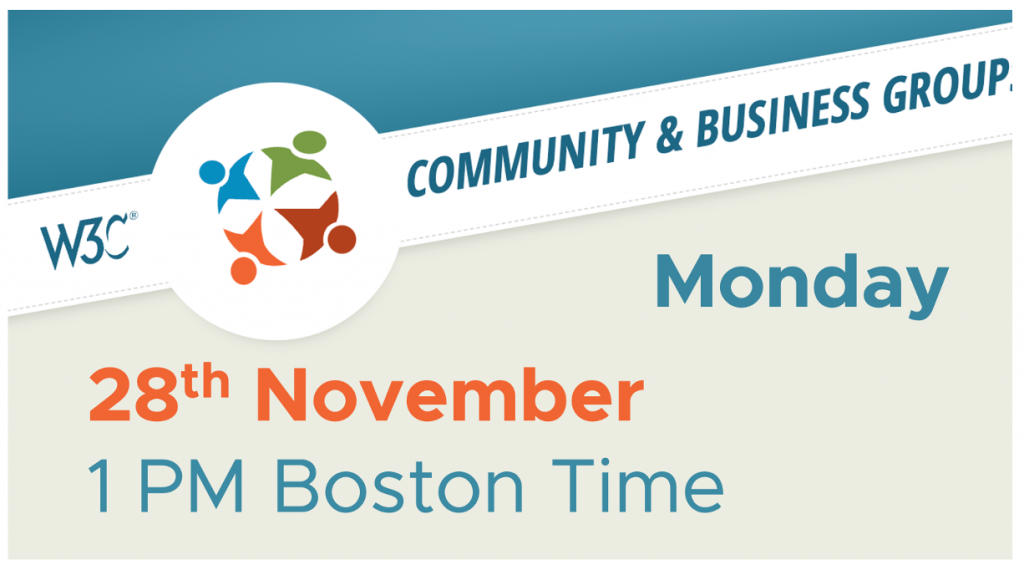
– Janina
The Accessibility at the Edge Community Group’s mission is to examine improvements to internet accessibility via “edge computing”, a relatively new paradigm that focuses on performing tasks at the edge of the network. We plan to cover all relevant topics including overlays and prospective applications not yet implemented anywhere. A11Y-EDGE CG meetings work and operate under the W3C Code of Ethics and Professional Conduct https://www.w3.org/Consortium/cepc/.
Our request for teleconference availability went out, and the results are in. Thanks to everyone who responded. We reviewed people’s preferences and the consensus seems to be Mondays 1 PM Boston time.
Decided: Our Accessibility at the Edge Community Group will meet Mondays 1 PM Boston time. Click here to view this time in your own timezone.
First meeting, 28 November 2022. Meetings are an hour, but end ten minutes early to avoid overlapping with other meetings.
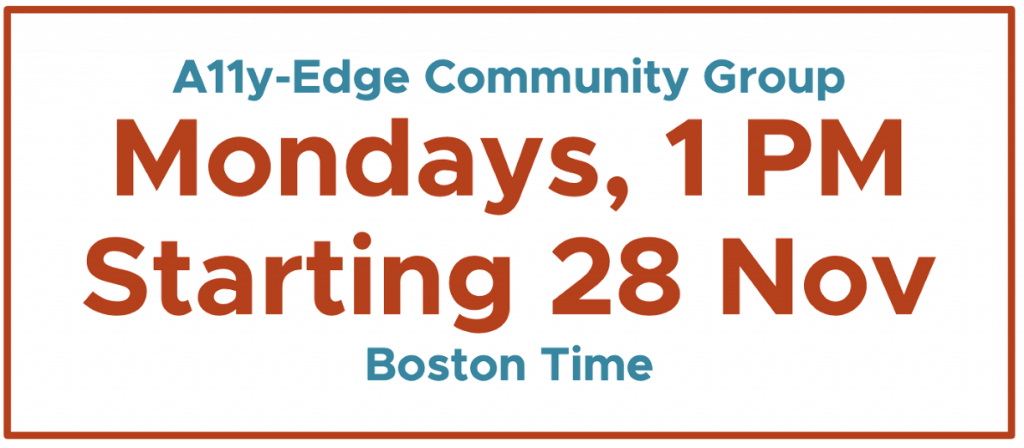
Joining the group requires a W3C login, which is free and available on the W3C account request page. To be sure you receive the Zoom coordinates, join the Community Group on its W3C hosting page. You may also bookmark the group’s home page and feel free to share.
To everyone whose times we were unable to accommodate, we apologize. We always knew we would not be able to satisfy everyone.
See you at the meeting, we look forward it.
Recent Comments